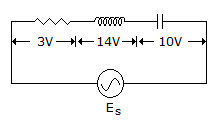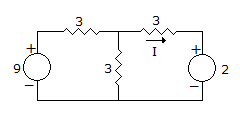Electronics and Communication Engineering - Networks Analysis and Synthesis
Exercise : Networks Analysis and Synthesis - Section 4
- Networks Analysis and Synthesis - Section 14
- Networks Analysis and Synthesis - Section 27
- Networks Analysis and Synthesis - Section 26
- Networks Analysis and Synthesis - Section 25
- Networks Analysis and Synthesis - Section 24
- Networks Analysis and Synthesis - Section 23
- Networks Analysis and Synthesis - Section 22
- Networks Analysis and Synthesis - Section 21
- Networks Analysis and Synthesis - Section 20
- Networks Analysis and Synthesis - Section 19
- Networks Analysis and Synthesis - Section 18
- Networks Analysis and Synthesis - Section 17
- Networks Analysis and Synthesis - Section 16
- Networks Analysis and Synthesis - Section 15
- Networks Analysis and Synthesis - Section 1
- Networks Analysis and Synthesis - Section 13
- Networks Analysis and Synthesis - Section 12
- Networks Analysis and Synthesis - Section 11
- Networks Analysis and Synthesis - Section 10
- Networks Analysis and Synthesis - Section 9
- Networks Analysis and Synthesis - Section 8
- Networks Analysis and Synthesis - Section 7
- Networks Analysis and Synthesis - Section 6
- Networks Analysis and Synthesis - Section 5
- Networks Analysis and Synthesis - Section 4
- Networks Analysis and Synthesis - Section 3
- Networks Analysis and Synthesis - Section 2
26.
The self inductances of two coils are 27 H and 3 H. If the winding or coils is such that 50% of flux of one links the other, the mutual inductance is
Answer: Option
Explanation:
M = 0.5(27 x 3)
27.
In a lead acid cell, the positive plate has spongy lead.
Answer: Option
Explanation:
The positive plate has lead peroxide.
28.
The rms voltage measured across each of the circuit element in figure is as shown, when the circuit is excited by a sinusoidal voltage Es, the rms value of the source voltage es is


Answer: Option
Explanation:
Voltage across C = -10jv
Voltage across L = + 14 jv
source voltage Es = VR + jVL - jVC = 3 + j. 14 - j. 10  3 + j4
3 + j4
rms of Es = VR2(VL - VC)2 = 32 + 42  5 volt.
5 volt.
29.
For H(s) to be positive real, the condition Re[H(jω)] ≥ 0 for 0 ≤ ω ≤ ∞ is
Answer: Option
Explanation:
H(s) must possess two more properties if it is positive real.
30.
In the circuit, shown the current I marked is given by


Answer: Option
Explanation:
When 9 V source is connected, 2V source is short circuited [Superposition Theorem].

I' = 9/4.5 = 2 A, I1 = 1.5 A
when 2 volt source is connected, then Req = 4.5
 I2 = 0.22 A
I2 = 0.22 A
I = I1 + I2 = 0.66 A.
Quick links
Quantitative Aptitude
Verbal (English)
Reasoning
Programming
Interview
Placement Papers